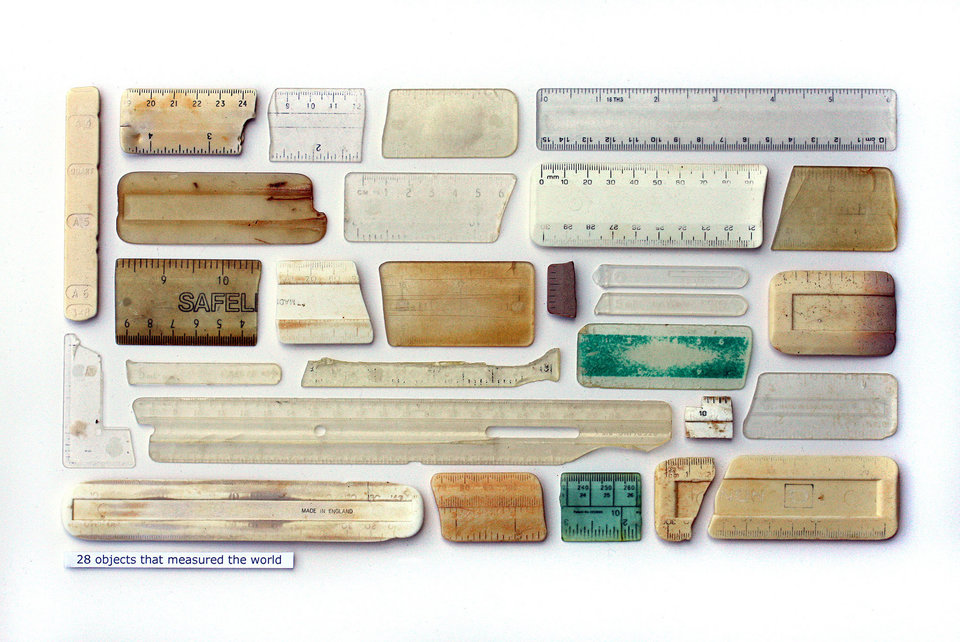The USC Fisher Museum of Art in Los Angeles is currently exhibiting Gyre: The Plastic Ocean, a show that explores the culture of plastic consumption, and our relationship with the world’s oceans. You can see some of the art works in the show here: https://fisher.usc.edu/gyre-the-plastic-ocean/. The images in this post are “UFO Plastic Gyre Series” by artist Andy Hughes and
“28 Objects That Measured The World,” by Steve McPherson.
This is not the first time we’ve posted plastic-related or pollution-related themes in art works. It’s a topic that comes up again and again in art, because it is one of our most visible impacts on the planet. We all see plastic trash washed up on our beaches and along the sides of the road.
Plastic and climate change are intimately connected:
1. Plastic is made from fossil fuels (specifically, hydrocarbon gas liquids (HGL) and natural gas). In the United States, about 200 million barrels of HGL and 400 billion cubic feet of natural gas are used annually to make plastic. This is equivalent to about 1.7% of total US natural gas consumption. In addition, 65 billion kilowatt hours of electricity are used to make plastic, about 1.7% of total US electricity consumption.
2. Plastic has made throwaway consumer culture possible. Before plastics, we tended to reuse things because they were made from more expensive materials. But now, with plastic, we consume and throw away. The more we consume, the more energy we use, and the more we contribute to climate change.
China also makes a lot of plastic. A whole lot. In fact, they are looking to the Pacific Northwest for more fossil fuels to help them make plastic. A recent article at Sightline describes how the Chinese government wants to build three methanol refineries – in Kalama, Tacoma and Clatskanie (OR) – specifically to make fuel for plastic manufacturing. As the article describes:
Methanol refining requires prodigious amounts of energy. Just powering a refinery’s operations would require burning about one-third of the natural gas that’s piped into the facility. The plants would each have a power load of 200 megawatts of electricity, use about 2,500 gallons of water per minute, and produce a stew of waste that includes heavy metals, volatile organic compounds, and various air pollutants.
We all know plastic pollution is a problem for our oceans; it is also clear that plastic is a problem for our fossil fuel use and CO2 emissions.
I wanted to post again about this topic because I just read about a recent Chinese study that shows increasing plastic concentrations in sea salt products, about 681 plastic particles per kilogram of sea salt, mostly polyethylene, PET, and cellophane. We are also eating plastic in other food, such as honey, and sea food. By creating and throwing away so much plastic, we are hurting ourselves and the rest of the planet in so many horrific ways.
We will be highlighting the connection between consumption, waste, and climate change during Earth Art Bainbridge in April 2016 with the “Trashion Show”. If you’re interested in participating, please contact Bainbridge Island Zero Waste.



Recent Comments